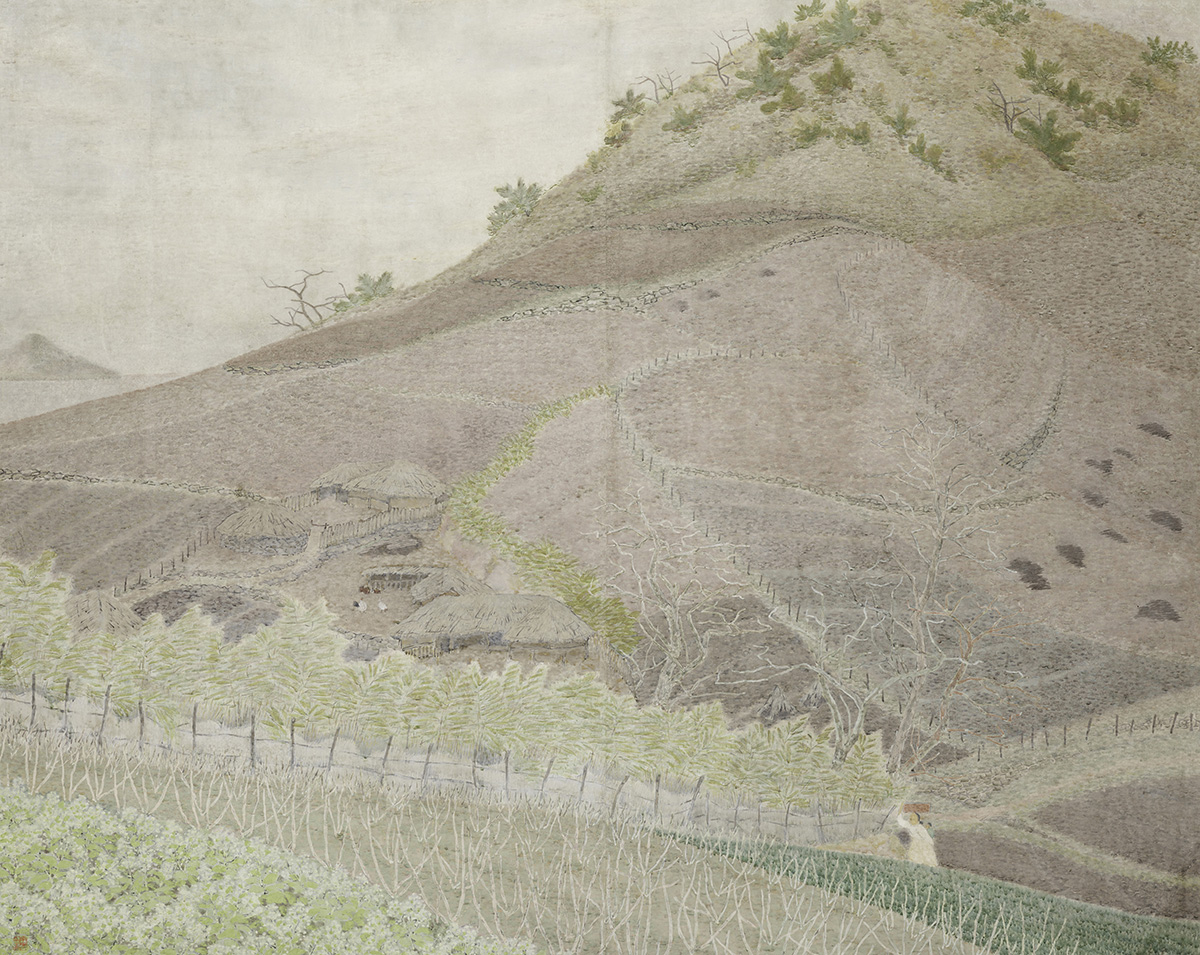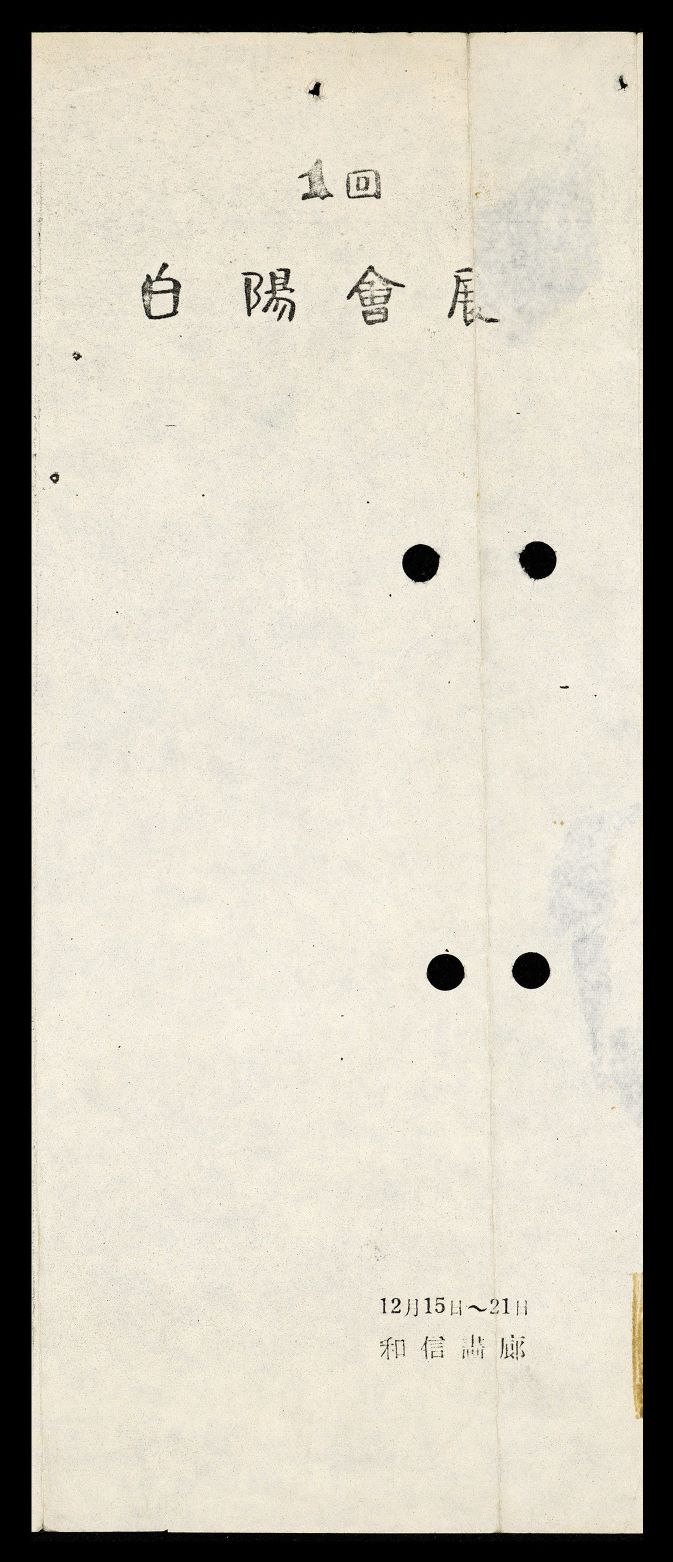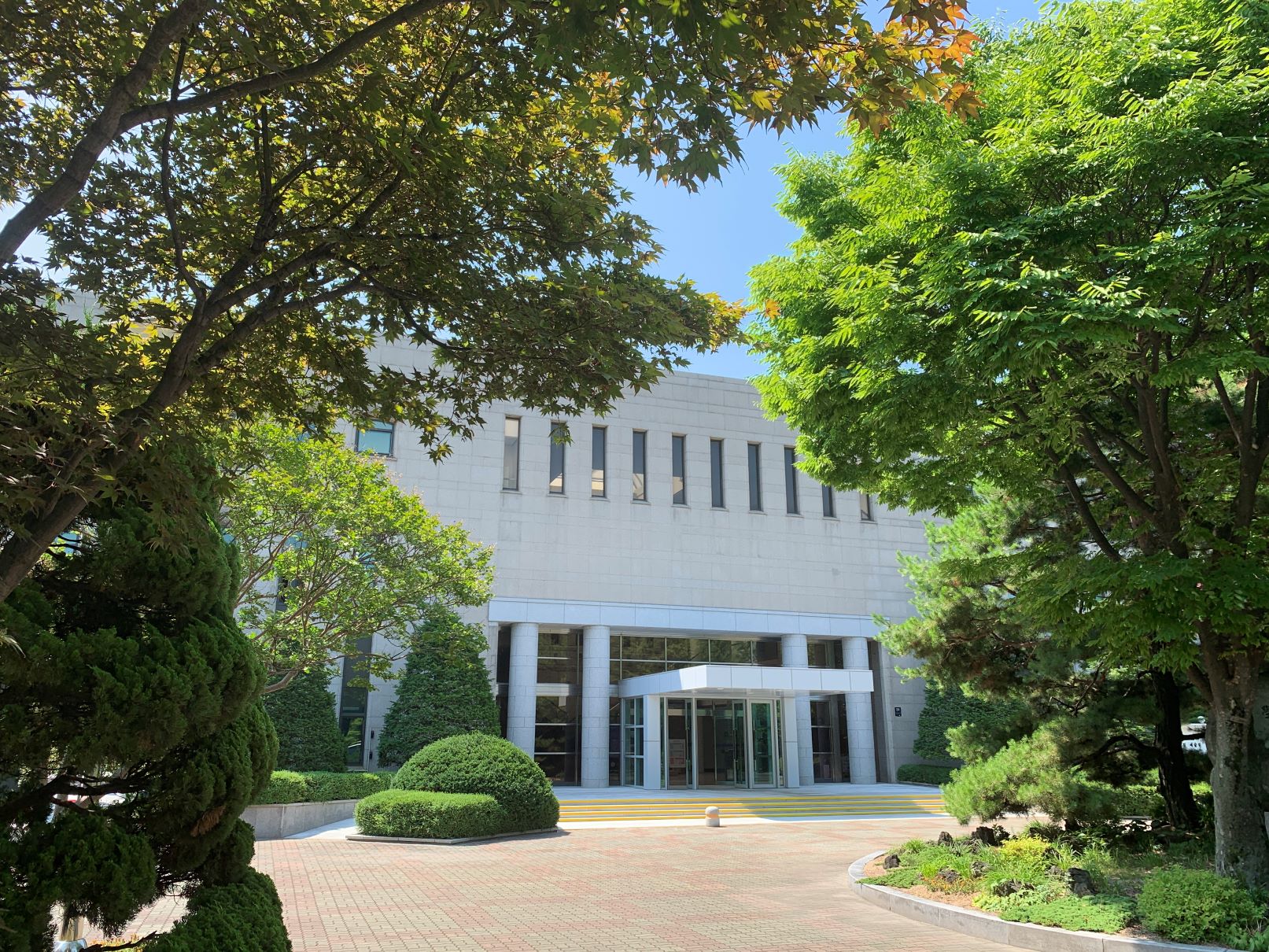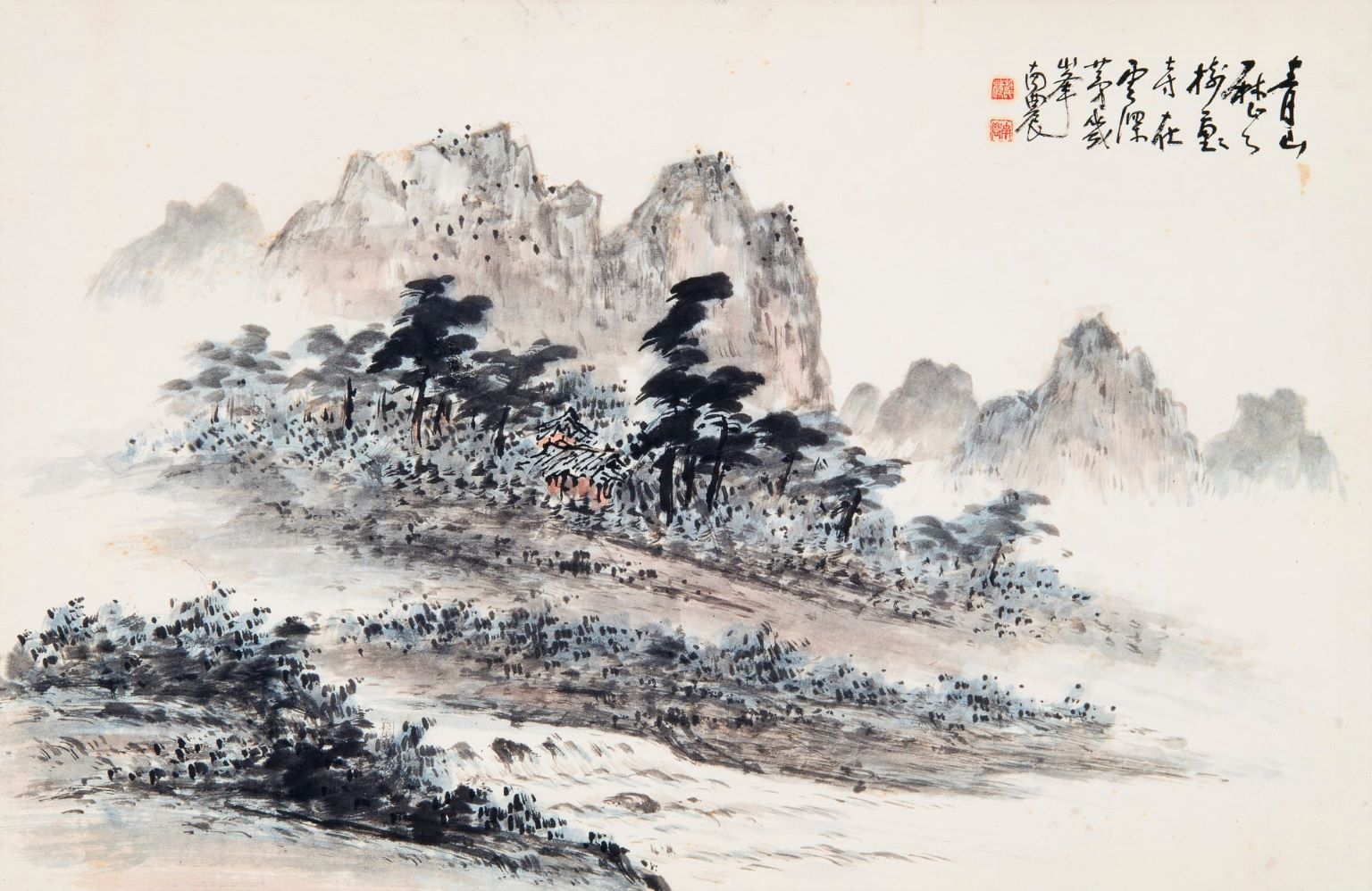
Heo Geon, Suburbs of Mokpo, 1942, Ink and color on paper, 137×171.5cm. MMCA collection
Heo Geon
* Source: Multilingual Glossary of Korean Art. Korea Arts Management Service
Related
-

Paek Yang Painting Association
An art group formed in 1957 to explore new perspectives on Korean paintings and educate future artists. The group was formed by nine artists including Kim Kichang and Park Rehyun of the Husohoe (who were students of Kim Eunho, also known by his pen name I-dang), Kim Youngki, and Chun Kyungja. In January 1961, the group organized a touring exhibition in Southeast Asia, which is noteworthy as the first overseas exhibition held by a Korean private-sector art organization. In this traveling exhibition, the term “hangukwa (Korean painting)” was used for the first time to refer to traditional ink painting, instead of the previously dominant term “Eastern painting.”
-

The National Academy of Arts, Republic of Korea
An organization established in July 1954 to support artists who have been recognized as making a significant contribution to the arts at a national level. The organization is also responsible for advising the government on policies for the advancement of the arts, supporting the creative endeavors of artists in general, engaging in international exchanges and exhibitions, and hosting events. The academy has four divisions: literature, art, music, and performing arts/film/dance. The current membership numbers at 100.
-

Eastern painting
Eastern painting (dongyanghwa) refers to the overall body of works created using traditional East Asian materials and methods, in contrast to Western painting. In Korea, Byeon Yeongro’s essay “On Eastern Painting” published in Dong-A Ilbo on 7th, July, 1920 was the first use of the term. The term then began to be used in Japan first to distinguish Oriental style paintings from Western ones. Until the late Joseon era, both calligraphy and painting were categorized under the term seohwa, but during the Japanese occupation of Korea in 1922, the first Joseon Art Exhibition [Joseon misul jeollamhoe] divided the painting section into Western and Eastern styles. Thereafter, the term Eastern-style painting entered official use in the country. After independence, the National Art Exhibition (Gukjeon) continued to use the term “Eastern painting,” but since 1970, numerous arguments were made to replace it with "Korean painting," because the term was imposed unilaterally during the Japanese colonial era.







